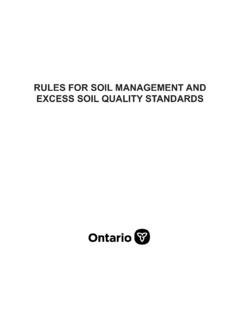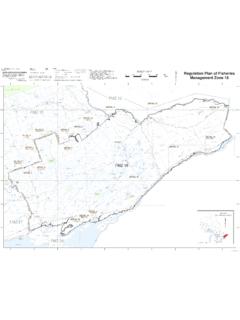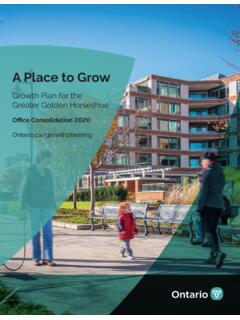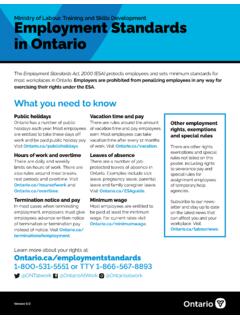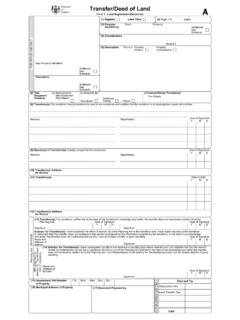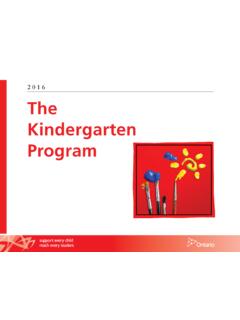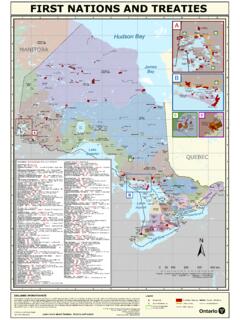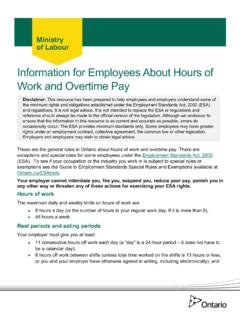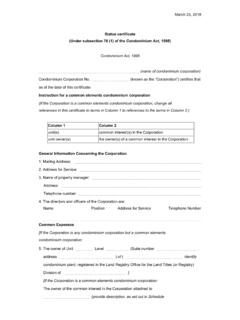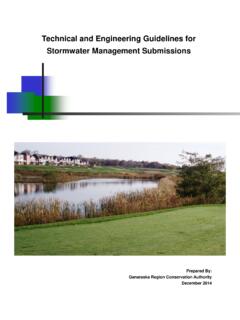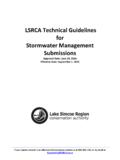Transcription of Provincial Policy Statement, 2020 - Premier of Ontario
1 Provincial Policy Statement, 2020 Under the Planning Policy STATEMENT, 2020 Approved by the Lieutenant Governor in Council, Order in Council No. 229/2020 This Provincial Policy Statement was issued under section 3 of t he Planning Act and came into effect May 1, 2020. It replaces the Provincial Policy Statement issued April 30, 2014. Table of Contents PART I: PREAMBLE 1 PART II: LEGISLATIVE AUTHORITY 2 PART III: HOW TO READ THE Provincial Policy STATEMENT 2 PART IV: VISION FOR Ontario S LAND USE PLANNING SYSTEM 5 PART V: POLICIES 7 BUILDING STRONG HEALTHY COMMUNITIES 7 Managing and Directing Land Use to Achieve Efficient and Resilient Development and Land Use Patterns 7 Settlement Areas 8 Rural Areas in Municipalities 10 Rural Lands in Municipalities 11 Territory Without Municipal Organization 12 Coordination 12 Land Use Compatibility 14 Employment 14 Employment Areas 15 Housing 16 Public Spaces, Recreation, Parks, Trails and Open Space 17 Infrastructure and Public Service Facilities 17 Sewage, Water and stormwater 18 Transportation Systems 20 Transportation and Infrastructure Corridors 20 Airports.
2 Rail and Marine Facilities 21 Waste management 21 Energy Supply 22 Long-Term Economic Prosperity 22 Energy Conservation, Air Quality and Climate Change 22 WISE USE AND management OF RESOURCES 24 Natural Heritage 24 Water 25 Agriculture 26 Minerals and Petroleum 28 Mineral Aggregate Resources 29 Cultural Heritage and Archaeology 31 PROTECTING PUBLIC HEALTH AND SAFETY 32 Natural Hazards 32 Human-Made Hazards 34 IMPLEMENTATION AND INTERPRETATION 35 FIGURE 1 37 DEFINITIONS 40 1 | Provincial Policy Statement, 2020 Part I: Preamble The Provincial Policy Statement provides Policy direction on matters of Provincial interest related to land use planning and development.
3 As a key part of Ontario s Policy -led planning system, the Provincial Policy Statement sets the Policy foundation for regulating the development and use of land. It also supports the Provincial goal to enhance the quality of life for all Ontarians. The Provincial Policy Statement provides for appropriate development while protecting resources of Provincial interest, public health and safety, and the quality of the natural and built environment. The Provincial Policy Statement supports improved land use planning and management , which contributes to a more effective and efficient land use planning system. The policies of the Provincial Policy Statement may be complemented by Provincial plans or by locally-generated policies regarding matters of municipal interest.
4 Provincial plans and municipal official plans provide a framework for comprehensive, integrated, place-based and long-term planning that supports and integrates the principles of strong communities, a clean and healthy environment and economic growth, for the long term. Municipal official plans are the most important vehicle for implementation of this Provincial Policy Statement and for achieving comprehensive, integrated and long-term planning. Official plans shall identify Provincial interests and set out appropriate land use designations and policies. Official plans should also coordinate cross-boundary matters to complement the actions of other planning authorities and promote mutually beneficial solutions.
5 Official plans shall provide clear, reasonable and attainable policies to protect Provincial interests and direct development to suitable areas. In order to protect Provincial interests, planning authorities shall keep their official plans up-to-date with this Provincial Policy Statement. Zoning and development permit by-laws are also important for implementation of this Provincial Policy Statement. Planning authorities shall keep their zoning and development permit by-laws up-to-date with their official plans and this Provincial Policy Statement. Land use planning is only one of the tools for implementing Provincial interests. A wide range of legislation, regulations, policies and programs may apply to decisions with respect to Planning Act applications and affect planning matters, and assist in implementing these interests.
6 Within the Great Lakes St. Lawrence River Basin, there may be circumstances where planning authorities should consider agreements related to the protection or restoration of the Great Lakes St. Lawrence River Basin. Examples of these agreements include Great Lakes agreements between Ontario and Canada, between Ontario and Quebec and the Great Lakes States of the United States of America, and between Canada and the United States of America. Provincial Policy Statement, 2020 | 2 Part II: Legislative Authority The Provincial Policy Statement is issued under the authority of section 3 of the Planning Act and came into effect on May 1, 2020. In respect of the exercise of any authority that affects a planning matter, section 3 of the Planning Act requires that decisions affecting planning matters shall be consistent with Policy statements issued under the Act.
7 Comments, submissions or advice that affect a planning matter that are provided by the council of a municipality, a local board, a planning board, a minister or ministry, board, commission or agency of the government shall be consistent with this Provincial P olicy Statement. Part III: How to Read the Provincial Policy Statement The Provincial Policy -led planning system recognizes and addresses the complex inter-relationships among environmental, economic and social factors in land use planning. The Provincial Policy Statement supports a comprehensive, integrated and long-term approach to planning, and recognizes linkages among Policy areas. Read the Entire Provincial Policy Statement The Provincial Policy Statement is more than a set of individual policies.
8 It is to be read in its entirety and the relevant policies are to be applied to each situation. When more than one Policy is relevant, a decision-maker should consider all of the relevant policies to understand how they work together. The language of each Policy , including the Implementation and Interpretation policies, will assist decision-makers in understanding how the policies are to be implemented. While specific policies sometimes refer to other policies for ease of use, these cross-references do not take away from the need to read the Provincial Policy Statement as a whole. There is no implied priority in the order in which the policies appear. Consider Specific Policy Language When applying the Provincial Policy Statement it is important to consider the specific language of the policies.
9 Each Policy provides direction on how it is to be implemented, how it is situated within the broader Provincial Policy Statement, and how it relates to other policies. Some policies set out positive directives, such as settlement areas shall be the focus of growth and development. Other policies set out limitations and prohibitions, such as development and site alteration shall not be permitted. Other policies use enabling or supportive language, such as should, promote and encourage. 3 | Provincial Policy Statement, 2020 The choice of language is intended to distinguish between the types of policies and the nature of implementation. There is some discretion when applying a Policy with enabling or supportive language in contrast to a Policy with a directive, limitation or prohibition.
10 Geographic Scale of Policies The Provincial Policy Statement recognizes the diversity of Ontario and that local context is important. Policies are outcome-oriented, and some policies provide flexibility in their implementation provided that Provincial interests are upheld. While the Provincial Policy Statement is to be read as a whole, not all policies will be applicable to every site, feature or area. The Provincial Policy Statement applies at a range of geographic scales. Some of the policies refer to specific areas or features and can only be applied where these features or areas exist. Other policies refer to planning objectives that need to be considered in the context of the municipality or planning area as a whole, and are not necessarily applicable to a specific site or development proposal.
